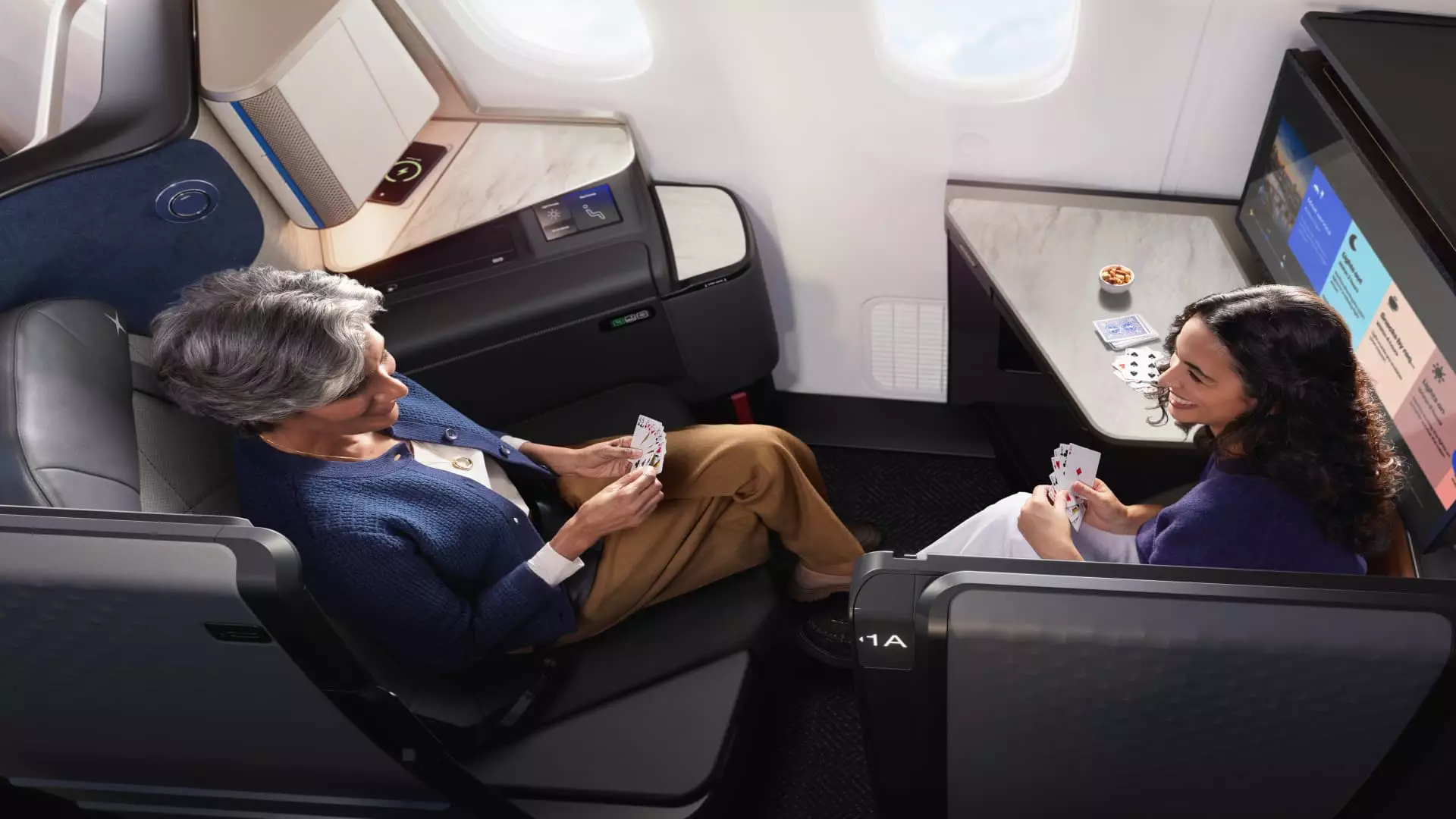In a world where fortunes can rest upon the quality of an airplane seat, U.S. airlines are locked in a comedic yet disturbing battle for supremacy in the international business-class market. The stakes? An elite experience padded with luxury that can sometimes evoke more eye-rolls than applause. American Airlines is leading the charge with its introduction of new business-class “suites” that promise privacy and opulence, boasting features like sliding doors and even trinket trays. It’s akin to airlines attempting to sell us palatial micro-apartments high in the sky while simultaneously charging a premium for the privilege to experience the cramped conditions below in economy. The goal? To entice a demographic that can afford to lavish money on experiences—because who doesn’t want to shell out thousands for a seat that resembles an office cubicle with a view?
Fleeting Luxury and the Triviality of Amenities
One cannot help but notice the absurd arms race of amenities that airlines, such as United and American, are waging. It appears that adding small luxuries—like wireless charging pads and noise-canceling headphones—has become a convoluted form of status signaling. United Airlines, for instance, is striving to distinguish itself with Polaris Studios and 27-inch 4K screens, painting a high-tech image to attract ambitious corporate travelers. Yet this hyperfocus on elaborate details leaves the question lingering: do these features genuinely improve the travel experience, or are they merely trinkets designed to distract from the airline’s systemic issues?
As these airlines inflate the characteristics of business class, where does that leave the actual human experience? Consider the staggering prices. A business-class ticket from Philadelphia to London under American’s new suite costs approximately $5,747. In stark contrast, you could opt for a standard coach seat at a mere $867. Paying six times more for a sliding door and a tray for your valuables feels grossly extravagant, especially when one’s fundamental need for personal comfort is compromised at such heights. Eventually, one has to wonder: what are we really paying for—an enhanced flight experience or simply the illusion of status and comfort?
The Velvet Rope of Class
Among business travelers, the nomenclature used by airlines is crucial. “First class” has morphed into the cultural equivalent of an exclusive nightclub. Many corporations won’t approve a first-class ticket purchase but will greenlight business class—a peculiarity that demonstrates the state of priorities in corporate America. The airline experience’s evolution reflects a societal fixation with class stratification, where the perceived luxury of amenities runs parallel to the less-than-luxurious reality of air travel.
Airlines are betting aggressively that affluent travelers will keep splurging on this increasingly gilded aisle. Even in the face of downturned budgets amid economic uncertainty, the appetite for opulence doesn’t seem to wane. Therein lies an unsettling dichotomy; as the service intensifies, the disparities among airline offerings also become pronounced. When airlines conflate actual comfort with perceived luxury, this can lead to the elephant in the room—an increasingly entitled perspective on travel.
High Hopes or Fool’s Gold?
Another fascinating layer to this airline melodrama is the notion of “premium,” a term that’s been hijacked and repainted across the industry. United’s and American’s efforts to outdo each other have become a parody of what premium travel should entail. Rather than improving fundamental service issues such as delays or cancellations, the focus seemingly shifts to introducing elaborate dining experiences; United boasts of caviar and bespoke service set against plush bedding—essentially reselling gluttony wrapped in well-designed marketing.
Meanwhile, companies like Emirates offer showers on their A380s and unlimited caviar service, highlighting the aviation reality that some international carriers have raised the stakes far beyond U.S. offerings. Here we see where the greater absurdity lies; when high-cost travel is no longer about genuine comfort but rather about lofty expectations tethered to extravagant prices and brilliant branding, the industry risks alienating its clientele.
In this grand spectacle unfolding 30,000 feet above ground, one can’t help but ask: is the focus on luxury morphing our perception of what air travel should be? As airlines like American and United roll out increasingly opulent suites, are we embodying a race to the bottom, where top-tier seating becomes nothing more than a gilded prison? Only time will reveal if this obsession with extravagance will serve to enhance or erode the consumer experience, but for now, one thing is clear: the airlines are soaring to new heights—or perhaps just new depths.

